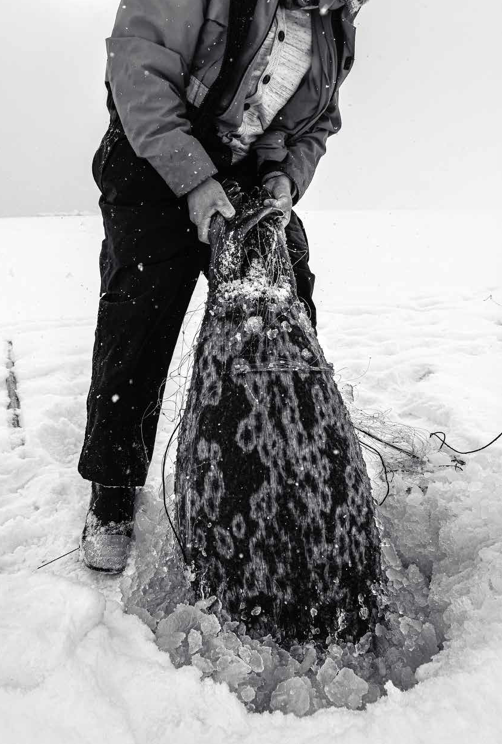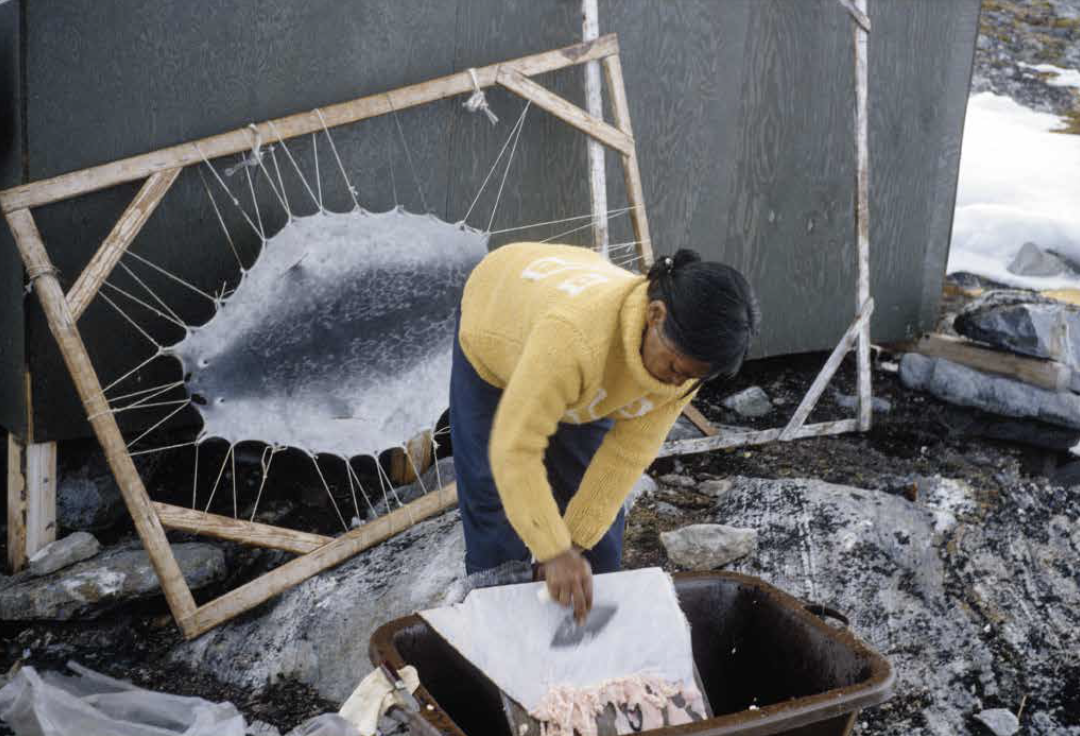
SEAL HUNTING
The first settlers, the Saqqaq people, lived at the Icefjord in the periode 2500-800 BC.
They had an early version of the kayak as their preferred vessel. To catch their game they used the harpoon.

Around 1200 Inuit, the Thule people, arrived at the Disko Bay. They came from Canada and are the ancestors of the Greenlandic people.
They developed the kayak into its present form and introduced floats as a development of the hunt with harpoons. The floats prevented the harpooned seal from getting away or sinking to the bottom.
Find more information about migration to Greenland.
Which other prehistoric hunting weapon is similar to the harpoon – is it still used for hunting?
What was the floats made of? Get help at p. 25 in the book.
Write, draw or record a story with the title A dangerous journey from Canada to the Disko Bay in 1249.
My story:
Hunting the ringed seal at breathing holes during the winter season was vital for prehistoric people. This hunting method was already used by the first settlers at the Icefjord. Today with more modern equipment.

The first settlers developed a type of harpoon head which lodged itself horizontally in the wound when the line was pulled. The harpooned seal was then killed with a lance fitted with a foreshaft.
Why was the ringed seal vital to people of the past?
In the picture a seal is being drawn out of the breathing hole. How has it been caught?
For how many thousand years has breathing hole hunting been known?
The ringed seal has always been important food for the settlers at the Icefjord.
Seal meat contains high amounts of vitamins C and D which are needed to prevent illnesses such as scurvy.

All of the seal was used. The blubber that was not eaten, provided fuel and light. The skin was used for clothing and kayaks.
Which tool is the woman in the picture using, and what is she doing?
Make a list of the things a seal can be used for.
Why was it important to eat seal meat – especially in winter?
The first settlers, the Saqqaq people, lived at the Icefjord in the periode 2500-800 BC.
They had an early version of the kayak as their preferred vessel. To catch their game they used the harpoon.

Around 1200 Inuit, the Thule people, arrived at the Disko Bay. They came from Canada and are the ancestors of the Greenlandic people.
They developed the kayak into its present form and introduced floats as a development of the hunt with harpoons. The floats prevented the harpooned seal from getting away or sinking to the bottom.
Find more information about migration to Greenland.
Which other prehistoric hunting weapon is similar to the harpoon – is it still used for hunting?
What was the floats made of? Get help at p. 25 in the book.
Write, draw or record a story with the title A dangerous journey from Canada to the Disko Bay in 1249.
My story:
Hunting the ringed seal at breathing holes during the winter season was vital for prehistoric people. This hunting method was already used by the first settlers at the Icefjord. Today with more modern equipment.

The first settlers developed a type of harpoon head which lodged itself horizontally in the wound when the line was pulled. The harpooned seal was then killed with a lance fitted with a foreshaft.
Why was the ringed seal vital to people of the past?
In the picture a seal is being drawn out of the breathing hole. How has it been caught?
For how many thousand years has breathing hole hunting been known?
The ringed seal has always been important food for the settlers at the Icefjord.
Seal meat contains high amounts of vitamins C and D which are needed to prevent illnesses such as scurvy.

All of the seal was used. The blubber that was not eaten, provided fuel and light. The skin was used for clothing and kayaks.
Which tool is the woman in the picture using, and what is she doing?
Make a list of the things a seal can be used for.
Why was it important to eat seal meat – especially in winter?




